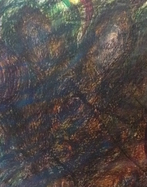† Michael Barr, Charles Wells, "Toposes, Triples and Theories", Chapter 2
$X$ を位相空間, $\mathbf{Psh}(X)$ を $X$ 上の前層の圏, $\mathbf{Sh}(X)$ を $X$ 上の層の圏とする.
前層 $F : \mathscr{O}(X)^{\mathrm{op}} \rightarrow \mathbf{Set}$ を任意にとって固定する.
$U$ を $X$ の任意の開集合, $\{ U_i \}_{i \in I}$ を $U$ の任意の開被覆とする. このとき, 積 $\prod FU_i$, $\prod F(U_i \cap FU_j)$ の普遍性から, 以下の 3 つの図式を可換にする 3 つの写像
\begin{align*}
\newcommand{\Ar}[1]{\mathrm{Ar}(#1)}
\newcommand{\Arr}[1]{\mathrm{Arr}(#1)}
\newcommand{\Card}{\text{card}}
\newcommand{\Cdot}{\,\cdot^{\mathrm{op}}}
\newcommand{\Cocone}{\mathrm{Cocone}}
\newcommand{\Colim}{\mathrm{colim}\,}
\newcommand{\CommaCat}[2]{(#1/#2)}
\newcommand{\Cone}{\mathrm{Cone}}
\newcommand{\Eqclass}[4]{{#1#2#3}_{#4}}
\newcommand{\EqCls}[2]{{\left[#1\right]}_{#2}}
\newcommand{\Eqcls}[1]{\left[#1\right]}
\newcommand{\FnRest}[2]{{#1}|{#2}}
\newcommand{\Func}[2]{\mathrm{Func}(#1,#2)}
\newcommand{\g}{\varg}
\newcommand{\Hom}{\mathrm{Hom}}
\newcommand{\Id}[1]{\mathrm{id}_{#1}}
\newcommand{\In}{\mathrm{incl}}
\newcommand{\Inc}[2]{\mathrm{incl}\left(#1,#2\right)}
\newcommand{\Incl}[2]{\mathrm{incl}_{#1}^{#2}}
\newcommand{\InclArrow}[2]{\morphism(0,0)/>->/<450,0>[\Incl{#1}{#2} : {#1}\,\,`{#2};]}
\newcommand{\Lb}[1]{\mathrm{lb}(#1)}
\newcommand{\Lowerset}[1]{\downarrow\!\!{#1}}
\newcommand{\Mb}[1]{\mathbf{#1}}
\newcommand{\Mbb}[1]{\mathbb{#1}}
\newcommand{\Mr}[1]{\mathrm{#1}}
\newcommand{\Ms}[1]{\mathscr{#1}}
\newcommand{\Mt}[1]{\mathtt{#1}}
\newcommand{\Mub}[1]{\mathrm{mub}(#1)}
\newcommand{\Nat}{\mathrm{Nat}}
\newcommand{\Ob}[1]{\mathrm{Ob}(#1)}
\newcommand{\Opp}[1]{{#1}^{\mathrm{op}}}
\newcommand{\Prj}[2]{\mathrm{proj}\left(#1,#2\right)}
\newcommand{\Proj}[2]{\mathrm{proj}^{#1}_{#2}}
\newcommand{\Pw}{\mathbf{P}}
\newcommand{\q}{\hspace{1em}}
\newcommand{\qq}{\hspace{0.5em}}
\newcommand{\Rel}[1]{\langle{#1}\rangle}
\newcommand{\Rest}[2]{{#1}|{#2}}
\newcommand{\SkelCat}[1]{\mathrm{sk}(#1)}
\newcommand{\Slash}[1]{{\ooalign{\hfil/\hfil\crcr$#1$}}}
\newcommand{\SliCat}[2]{{#1}\,\big/\,{#2}}
\newcommand{\Src}{d^{0,\mathrm{op}}}
\newcommand{\Sub}{\mathrm{Sub}}
\newcommand{\ssqrt}[1]{\sqrt{\smash[b]{\mathstrut #1}}}
\newcommand{\Tgt}{d^{1,\mathrm{op}}}
\newcommand{\TwArCat}[1]{\mathrm{Tw}(#1)}
\newcommand{\Ub}[1]{\mathrm{ub}(#1)}
\newcommand{\Upperset}[1]{\uparrow\!\!{#1}}
\newcommand{\VectCat}[1]{#1 \mathchar`- \mathbf{Vect}}
\newcommand{\Grp}{\mathbf{Grp}}
\newcommand{\Mon}{\mathbf{Mon}}
\newcommand{\POs}{\mathbf{Pos}}
\newcommand{\Psh}{\mathbf{Psh}}
\newcommand{\Set}{\mathbf{Set}}
\newcommand{\Sh}{\mathbf{Sh}}
\newcommand{\Top}{\mathbf{Top}}
\newcommand{\A}{\mathscr{A}}
\newcommand{\B}{\mathscr{B}}
\newcommand{\C}{\mathscr{C}}
\newcommand{\D}{\mathscr{D}}
\newcommand{\E}{\mathscr{E}}
\newcommand{\F}{\mathscr{F}}
\newcommand{\sH}{\mathscr{H}}
\newcommand{\I}{\mathscr{I}}
\newcommand{\J}{\mathscr{J}}
\newcommand{\K}{\mathscr{K}}
\newcommand{\sL}{\mathscr{L}}
\newcommand{\M}{\mathscr{M}}
\newcommand{\N}{\mathscr{N}}
\newcommand{\sO}{\mathscr{O}}
\newcommand{\sP}{\mathscr{P}}
\newcommand{\R}{\mathscr{R}}
\newcommand{\sS}{\mathscr{S}}
\newcommand{\T}{\mathscr{T}}
\newcommand{\U}{\mathscr{U}}
\newcommand{\V}{\mathscr{V}}
\newcommand{\W}{\mathscr{W}}
\newcommand{\X}{\mathscr{X}}
\newcommand{\Y}{\mathscr{Y}}
\newcommand{\Z}{\mathscr{Z}}
r &: FU \longrightarrow \prod_{i \in I} FU_i, \\
d_0, d_1 &: \prod_{i \in I} FU_i \longrightarrow \prod_{i,j \in I} F(U_i \cap U_j)
\end{align*} が一意的に定まる.
\begin{equation*}
\newdir{ >}{{}*!/-5pt/@{>}}
\newdir{ (}{{}*!/-2pt/@^{(}}
\begin{xy}
\xymatrix@=48pt {
FU \ar[r]^{r} \ar[dr]_{r_i} & {\prod FU_i} \ar[d]^{p_i} \\
~ & FU_i
}
\end{xy}
\end{equation*}
\begin{equation*}
\begin{xy}
\xymatrix@=48pt {
{\prod FU_i} \ar[r]^-{d_0} \ar[d]_{p_i} & {\prod F(U_i \cap U_j)} \ar[d]^{p_{ij}} & {\prod FU_i} \ar[r]^-{d_1} \ar[d]_{p_j} & {\prod F(U_i \cap U_j)} \ar[d]^{p_{ij}} \\
FU_i \ar[r]_-{r^i_{ij}} & F(U_i \cap U_j) & FU_j \ar[r]_-{r^j_{ij}} & F(U_i \cap U_j)
}
\end{xy}
\end{equation*} ここで,
\begin{align*}
r_i &= F\!\left(\Incl{U_i}{U}\right) : FU \longrightarrow FU_i & ~ & (\Incl{U_i}{U} : U_i \hookrightarrow U \text{ は包含写像}), \\
p_i &= \Proj{\prod FU_i}{FU_i} : \prod_{i \in I} FU \longrightarrow FU_i & & (i \text{-成分への射影}), \\
r^i_{ij} &= F\!\left(\Incl{U_i \cap U_j}{U_i}\right) : FU_i \longrightarrow F(U_i \cap U_j), & & \\
r^j_{ij} &= F\!\left(\Incl{U_i \cap U_j}{U_j}\right) : FU_j \longrightarrow F(U_i \cap U_j), & & \\
p_{ij} &= \Proj{\prod F(U_i \cap U_j)}{F(U_i \cap U_j)} : {\prod_{i,j \in I} F(U_i \cap U_j)} \longrightarrow F(U_i \cap U_j). & &
\end{align*} このとき, 次の命題が成り立つ.
命題. $F$ が層となるための必要十分条件は, $X$ の任意の開集合 $U$ と, $U$ の任意の開被覆 $\left\{ U_i \right\}$ に対して図式
\begin{equation}
\label{dgm:sheaf-equalizer}
\begin{xy}
\xymatrix@=48pt {
FU \ar[r]^-{r} & {\prod FU_i} \ar@<1ex>[r]^-{d_0} \ar@<-1ex>[r]_-{d_1} & {\prod F(U_i \cap U_j)}
}
\end{xy}
\end{equation} がイコライザーになることである.
証明の概略をメモとして残しておく.
証明. まず $F$ が層であると仮定する. $r,d_0,d_1$ を定める 3 つの図式が可換であることにより
\begin{align*}
p_{ij} \circ (d_0 \circ r)
&= (p_{ij} \circ d_0) \circ r
= (r^i_{ij} \circ p_i) \circ r
= r^i_{ij} \circ (p_i \circ r)
= r^i_{ij} \circ r_i \\
&= F\!\left(\Incl{U_i \cap U_j}{U_i}\right) \circ
F\!\left(\Incl{U_i}{U}\right) \notag \\
&= F\!\left(\Incl{U_i \cap U_j}{U}\right) \notag \\
&= F\!\left(\Incl{U_i \cap U_j}{U_j}\right) \circ
F\!\left(\Incl{U_j}{U}\right) \notag \\
&= r^j_{ij} \circ r_j
= r^j_{ij} \circ (p_j \circ r)
= (r^j_{ij}\circ p_j) \circ r
= (p_{ij} \circ d_1) \circ r \notag \\
&= p_{ij} \circ (d_1 \circ r). \notag
\end{align*} がすべての $i,j \in I$ について成り立つ. よって
\begin{equation}
\label{eq:d0.r=d1.r}
d_0 \circ r = d_1 \circ r
\end{equation} となり図式 (\ref{dgm:sheaf-equalizer}) は可換である.
$FU$ が図式 (\ref{dgm:sheaf-equalizer}) におけるイコライザーになっていることを示すには, $r : FU \rightarrow \prod FU_i$ が普遍性を持つこと, すなわち図式
\begin{equation}
\label{dgm:sheaf-equalizer-T}
\begin{xy}
\xymatrix@=48pt {
T \ar[r]^-{c} & {\prod FU_i} \ar@<1ex>[r]^-{d_0} \ar@<-1ex>[r]_-{d_1} & {\prod F(U_i \cap U_j)}
}
\end{xy}
\end{equation} を可換にするような任意の写像 $c : T \rightarrow {\prod FU_i}$ に対して, 写像 $u : T \rightarrow FU$ で図式
\begin{equation}
\label{dgm:sheaf-equalizer-u}
\begin{xy}
\xymatrix@=48pt {
T \ar[d]_{u} \ar[dr]^-{c} & ~ \\
FU \ar[r]_-{r} & {\prod FU_i}
}
\end{xy}
\end{equation} を可換にするものが一意的に存在することを示せばよい.
元 $t \in T$ を任意にとる. 各 $i \in I$ に対して $x_i = p_i \circ c(t)$ とおくと $x_i$ は $FU_i$ の元である. 図式 (\ref{dgm:sheaf-equalizer-T}) が可換で $d_0 \circ c = d_1 \circ c$ が成り立っていることから任意の $i,j \in I$ について
\begin{align*}
\Rest{x_i}{U_i \cap U_j}
&= F\!\left(\Incl{U_i \cap U_j}{U_i}\right)(x_i)
= r^i_{ij}(x_i) \\
&= r^i_{ij} \circ (p_i \circ c)(t)
= (r^i_{ij} \circ p_i) \circ c(t)
= (p_{ij} \circ d_0) \circ c(t) \\
&= p_{ij} \circ (d_0 \circ c)(t)
= p_{ij} \circ (d_1 \circ c)(t) \\
&= (p_{ij} \circ d_1) \circ c(t)
= (r^j_{ij} \circ p_j) \circ c(t)
= r^j_{ij} \circ (p_j \circ c)(t) \\
&= r^j_{ij}(x_j)
= F\!\left(\Incl{U_i \cap U_j}{U_j}\right)(x_j) \\
&= \Rest{x_j}{U_i \cap U_j}
\end{align*} が成り立つ. つまり $\Rest{x_i}{U_i \cap U_j}=\Rest{x_j}{U_i \cap U_j}$ である. このことと, $F$ が層であるという仮定より, 元 $x \in FU$ で族 $\{ x_i \}_{i \in I}$ に対して
\begin{equation}
\label{eq:sheaf-equalizer-ri(x)=ti}
\Rest{x}{FU_i} = x_i \quad (i \in I)
\end{equation} を満たすものが一意的に存在する. ここで $u(t)=x$ とおく. $t \in T$ が任意の元だったから $u$ は $T$ から $FU$ への写像として定義され, (\ref{eq:sheaf-equalizer-ri(x)=ti}) より各 $i \in I$ について
\begin{equation*}
p_i \circ (r \circ u(t)) = p_i \circ r(x) = r_i(x) = \Rest{x}{U_i} = x_i = p_i \circ c(t)
\end{equation*} となる. よって
\begin{equation*}
r \circ u = c
\end{equation*} であり, これは図式 (\ref{dgm:sheaf-equalizer-u}) が可換であることを意味する. したがって図式 (\ref{dgm:sheaf-equalizer}) はイコライザーである.
逆に図式 (\ref{dgm:sheaf-equalizer}) がイコライザーであるとする.
積 $\prod FU_i$ の部分集合 $T$ を
\begin{equation*}
T = \left\{ t=(x_i)_{i \in I} \in {\prod FU_i} \,\big|\,
\Rest{x_i}{U_i \cap U_j} = \Rest{x_j}{U_i \cap U_j} \qq (i,j \in I)
\right\}
\end{equation*} によって定義し, $c = \Incl{T}{\prod FU_i} : T \hookrightarrow \prod FU_i$ を包含写像とする. この定義から, 任意の $t=(x_i)_{i \in I} \in T$ と各々の $i,j \in I$ に対して
\begin{align*}
p_{ij} \circ (d_0 \circ c)(t)
&= p_{ij} \circ d_0(c(t))
= r^i_{ij} \circ p_i(c(t))
= r^i_{ij} \circ p_i(t)
= r^i_{ij} \circ p_i((x_i)_{i \in I})
= r^i_{ij}(x_i) \\
&= \Rest{x_i}{U_i \cap U_j}
= \Rest{x_j}{U_i \cap U_j} \\
&= r^j_{ij}(x_j)
= r^j_{ij} \circ p_j((x_i)_{i \in I})
= r^j_{ij} \circ p_j(t)
= r^j_{ij} \circ p_j(c(t))
= p_{ij} \circ d_1(c(t)) \\
&= p_{ij} \circ (d_1 \circ c)(t)
\end{align*} となる. よって
\begin{equation*}
d_0 \circ c = d_1 \circ c
\end{equation*} であり, これは図式
\begin{equation}
\label{dgm:sheaf-equalizer-T_2}
\begin{xy}
\xymatrix@=48pt {
T \ar[r]^-{c} & {\prod FU_i} \ar@<1ex>[r]^-{d_0} \ar@<-1ex>[r]_-{d_1} & {\prod F(U_i \cap U_j)}
}
\end{xy}
\end{equation} が可換になることを意味する.
図式 (\ref{dgm:sheaf-equalizer}) がイコライザーであるという仮定より, $c : T \rightarrow \prod FU_i$ に対して, 写像 $u : T \rightarrow \prod FU_i$ で図式
\begin{equation}
\label{dgm:sheaf-equalizer-u_2}
\begin{xy}
\xymatrix@=48pt {
T \ar[d]_{u} \ar[dr]^-{c} & ~ \\
FU \ar[r]_-{r} & {\prod FU_i}
}
\end{xy}
\end{equation} を可換にするものが一意的に存在する.
ここで写像 $x=u(t)$ とおくと, この $x$ は $u$ の一意性から各 $i \in I$ において
\begin{align*}
\Rest{x}{U_i}
&= r_i(x)
= p_i \circ r(x)
= p_i \circ r(u(t))
= p_i \circ c(t)
= p_i(t)
= p_i((x_i)_{i \in I}) \\
&= x_i
\end{align*} を満たす一意的な元である. したがって $F$ は層である.
以上のことより, $F$ が層になるための必要十分条件は, 図式 (\ref{dgm:sheaf-equalizer}) がイコライザーになることである. ■
【このカテゴリーの最新記事】
-
no image
-
no image
-
no image
-
no image
-
no image
